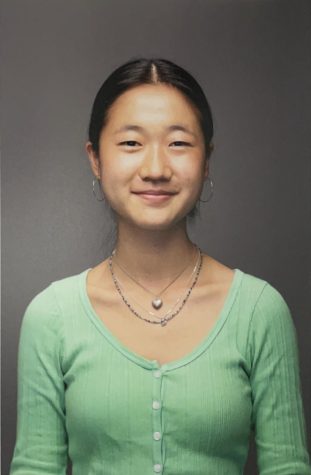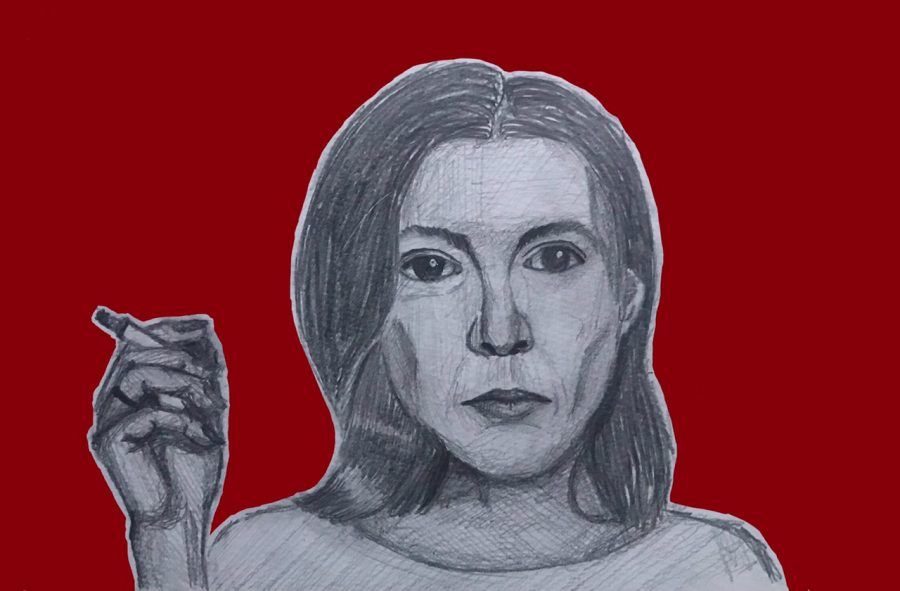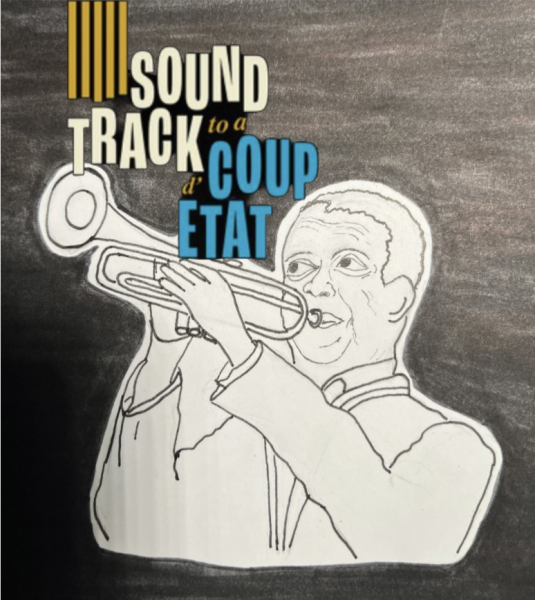Why You Should Read Joan Didion’s Writing
Photo by Amarins Edens
Joan Didion is one of those canonically American writers you may have heard of, but have never read. But why should you learn more about her work? Didion’s non-fiction, as well as her fiction writing about California and New York mostly evoke a nostalgia for a 1960s or 1970s America. However, they are also a surprisingly vivid reflection of the fragmentation and disorder we see in society today, making her as relevant to our generation as ever.
Joan Didion was born on the 5th of December, 1934 in Sacramento, California and died on the 23rd of December, 2021 in New York City. While she moved frequently throughout her childhood due to her father’s position with the Army Air Corps, California and its cities are recurrent in many of her most prominent works. Although Didion’s treatment of the American frontier, and later, American culture overall remains affecting today, inarguably what stands out the most in her writing, though, is the writing itself— that is, the elegance and expressiveness of her language, as well as the precision of the structure of each sentence. It’s no wonder how much care and thought went into every bit of her writing; having admired Ernest Hemingway since her adolescence for his “perfect sentences”, Didion learned how to write by typing out his stories.
What makes it easy to love Joan Didion’s writing is how clearly her vision is evoked. In an article for the New York Times titled “Why I Write”, Didion wrote, in one of her famously long sentences:
To shift the structure of a sentence alters the meaning of that sentence, as definitely and inflexibly as the position of a camera alters the meaning of the object photographed… The arrangement of the words matters, and the arrangement you want can be found in the picture in your mind… The picture tells you how to arrange the words and the arrangement of the words tells you, or tells me, what’s going on in the picture.
In that sense, Didion’s writing reads not as successively distinct clusters of words but as a whole, cohesive body. One can easily imagine and appreciate what Didion’s writing process was like; sitting in front of a typewriter, and later even a computer, phrasing and rephrasing over and over again.
But to understand anything, we must start at the beginning. Any writer knows that the opening sentence of a piece should draw in and define— Didion stated in one of her rare interviews that “everything else is going to flow out of that [first] sentence”. And, as Didion succinctly summarized in the same interview, while the first sentence is the gesture, the second is its complementing commitment. An excellent example of a pair of these sentences are the opening lines of “Goodbye to All That”, an essay about leaving New York published in the collection Slouching Towards Bethlehem.
It is easy to see the beginnings of things, and harder to see the ends. I can remember now, with a clarity that makes the nerves in the back of my neck constrict, when New York began for me, but I cannot lay my finger upon the moment it ended, can never cut through the ambiguities and second starts and broken resolves to the exact place on the page where the heroine is no longer as optimistic as she once was.
The curt, regretful tone of the first sentence is counterbalanced by the meandering reminiscence of the second, which is almost half a paragraph long. Didion’s language is easy to understand, but its simplicity builds a complexity of emotion. In fact, one does not need to read the rest of this essay to understand how this experience affected Didion— she summarizes the course and resolution of her internal conflict in the first two sentences of the piece. Perhaps it is this painstakingly meticulous writing process that lends Didion an ever-unflinchingly calm view of her subject despite the themes of disorder and fragmentation that define her oeuvre.
“Slouching Towards Bethlehem”, one of Didion’s most famous essays, (and later, the title of her first non-fiction book) acts as one of these cogent introductions to her writing, and by extension, to her as a person. The title for the essay which then, in turn, is the title of this collection, comes from the poem “The Second Coming” by William Butler Yeats— an obscure but ominous verse about the ending of things as we know them to be. In the essay, Didion describes the “cold late spring of 1967” as having been characterized as one of “brave hopes and national promise” by the mainstream. However, like Yeats, Didion feels as if the fabric of society is coming apart. This rupture is exemplified by the popularity of the counterculture movement— an anti-establishment, anti-war movement that emerged in the 1960s and 1970s— and the emergence of San Francisco’s Haight-Ashbury district as its American hub. While counterculture was a positive, popular movement towards an alternative world view, Didion’s piece captures its small-scale misdirection. Didion’s association with New Journalism is clearly reflected in this piece; the questionable honesty of the depiction of current events through Didion’s subjective lens reads as a story, not the news story that it was published as. Many of the subjects (or should they be called characters?) in this story are high school-age children, bringing a potentially obscure and far-off cultural moment into our own world. Throughout this essay, Didion captures the despondency and escapism of the younger generation through their use of drugs as well as their withdrawal into their own socio-political territory— the Haight-Ashbury district.
What remains consistent throughout Didion’s work is an unrelenting appreciation of a tangible reality instead of a sort of abstract feeling. In fact, not only did Joan Didion state “…I do not think in [the abstract]”, some could even say she abhorred it. This is immediately apparent in the care that went into her sentences; after all, although writing reflects an abstract concept, the way in which the sentence is written— or its aesthetic— is also what lends it meaning. Didion’s prioritization of form over content is obvious in many of her pieces, in which she gives beautifully worded non-answers to deeply pervasive societal issues. This is precisely why it is “Slouching Towards Bethlehem” that wholly captures Didion’s political, and by extension, world view.
By now it is no secret that Didion began her life and career as a conservative, writing notably for the National Review. For Didion, being a Goldwater Republican is what shaped her world view, and therefore, her writing. This is by no means a defense of her political views, but it is imperative to understand them in order to understand her. In her later collection of essays, Political Fictions, Didion states that “[my politics] are a logical product of a childhood largely spent among conservative California Republicans…before the meaning of ‘conservative’ changed in a post-war boom economy.” To Didion, pre-Reagan conservatism meant a disdain for ‘childish utopian thoughts’ and the unrelenting need to return to a sort of ‘innocence’— a fitting parallel to her preference for a tangible reality over abstract ideas. “Slouching Towards Bethlehem” captures her thoughts wholeheartedly; Didion sums up her hardness towards the counterculture movement, or recycling the term for it at the time, ‘the movement’, by stating that it was an adoption of a “romantic idealism as a lifestyle” by the younger generation in a “return to innocence…the invocation of an earlier authority and control.” This is what makes this essay such a clear representation of Didion and her writing. Her continued abhorrence of the abstract— in this case, “a return to innocence”— manifests itself in her ubiquitously consistent form. To Didion, the childishly idealist, well, children, portrayed in this essay represent not only what she detested in the political sphere (liberals) but also what caused her to leave the conservative movement and register as a Democrat later in life. Didion’s exaltation of individualism, and her elitist intellectual criticism of American society (the Didions were Old Californians, after all) made her unwelcome in her formerly familiar conservative sphere. She saw Reagan as a dishonest man and detested the fact that the New Republicans told the public what they should think as opposed to the truth. This point is perhaps foreshadowed in “Slouching Towards Bethlehem” in a line about the disillusionment of the young:
As it happens I am still committed to the idea that the ability to think for oneself depends upon one’s mastery of the language, and I am not optimistic about children who will settle for saying…that they come from a ‘broken home’. They are…an army of children waiting to be given the words.
In Didion’s words, learning how to think means learning how to write, and vice versa— an eerily prescient message.
Didion’s honesty, as well as her commitment to form over abstraction in writing, is what makes her a versatile writer particularly throughout changes in society’s values. Her later criticisms of America’s involvement in the Vietnam War, as well as her argument against the sensationalism of the Central Park 5 in a piece for the New York Review are what commonly associate her with the left today, and are what pushed her away from conservatism in the late 20th century. Didion’s stubborn anti-reactionism (though it could be argued that her ‘move’ to the left was a product of reactionism), summed up in another line from “Slouching Towards Bethlehem”, is what makes her refreshing to read as we feel society is on edge today: “It was not a country in open revolution. It was not a country under enemy siege.” Reactionism pervades the left and the right nowadays, and a case could be made for the fact that that is the reason (along with the growing sense of the futility of change) why people are, as always, becoming disillusioned with the political establishment and the status quo. We can potentially see these trends in what has been called the “big quit” of 2021, when more Americans quit their jobs than ever before. Didion re-examines the reasons behind, and the reactions to, political and societal change without quite assigning blame, but all the while alerting us to them.
Another marker of her cultural relevance is Didion’s criticism of change. Her background in Old California’s elite makes her wary of cultural shifts— it is what sparked her distaste for liberals and the post-war New California. While infamous for her somewhat anti-feminist essay “On Women”, in “Slouching Towards Bethlehem” Didion remarks on her cynicism towards the hippies she comes in contact with through her examination of a population falling back into the norms they deny by focusing on a hippy named Barbara:
…[she] will take a part-time job, modeling or teaching kindergarten…most of the time she keeps house and bakes…whenever I hear about [this], which is often, I think a lot about…how it is possible for people to be the unconscious instruments of values they would strenuously reject on a conscious level, but I do not mention this to Barbara.
In that sense, what defines Didion’s conservatism is not what some would normally think of today, like hatred or nostalgia (both reactionary sentiments), but an intelligently expressed distaste for willful ignorance, or as she put it, ‘agonized complacency’. After all, one of the main reasons she was hired for the National Review was so the right-wing publication could intellectually justify themselves to their left-wing counterparts.
The opening lines to another of her famous collections, The White Album, is also what drew me to Didion. “We tell ourselves stories in order to live,” she famously enunciates, but what does this really mean? I think what Didion disguises so well under the snobbishly elitist tone of her ever-so-elegant writing is that, in a youthfully unsure way, even she does not have the answers to why humans behave the way they do. She merely describes them, and gives her depictions to her audience to decipher. We know that she did not mean “we tell ourselves stories in order to live” in a romantically idealist sense; again, Didion valued grasping a tangible reality instead of making up some sort of abstraction of it. What Didion really means in this line, and what encapsulates that which makes her writing so captivating, is that no one has the answers, and we must come to our own conclusions as intelligent beings with agency but also humility. This is what makes Didion’s everlasting consistency satisfying— over a career that has spanned six decades, her writing has stood the test of time. However, it is satisfying to read her more recent work and see how her perspectives have changed with her experiences. Didion shifted her narrative, especially later in life. In her 2003 collection Where I Was From, she acknowledges the somewhat naïve and rigid view that she had held of her home state, and begrudgingly accepts that it no longer resembles what it once was. While an earlier Didion would have bemoaned this change, the older understands that its forces were beyond her, and it is unwise to hold onto something that no longer exists. At her roots Didion was conservative, but she understood that it did not, and could not, dictate every aspect of her life.
While Didion prioritized form, there is an undeniable dialectic between her form and her content. Unlike her contemporary counterparts, her writing is decidedly anti-voyeuristic; that is, she seeks to intellectually rather than morally flatter (or shock) her audience. Therefore, the purpose and significance of reading Didion’s work is to appreciate her aesthetic while simultaneously seeing past it and into her subject, particularly in an age where social media prioritizes appearance over context. Didion wrote in 1968 that “the center was not holding”, using Yeats’s words from 1920. This feeling of dread and uncertainty is obviously not unique to our generation, but as it has to others, it feels like no one else has felt it before. As young people, valuing critical thinking, honesty, reflection, and growth should be of the utmost importance to us, especially in an always-unsure world. Reading Joan Didion’s writing is a wonderful way to start doing so.
Suggested Reading (if you’re buying, don’t forget to support small bookstores. Also, don’t forget to check out the UNIS library!):
Slouching Towards Bethlehem – 1968 (nonfiction)
Play It As It Lays – 1970 (fiction)
The White Album – 1979 (nonfiction)
A Book of Common Prayer – 1995 (fiction)
Political Fictions – 2001 (nonfiction)
Where I Was From – 2003 (nonfiction)
The Year of Magical Thinking – 2005 (nonfiction)

Hi! My name is Anyue and I am in the class of 2023. I am one of UNISVerse's Editors in Chief, but before this position, I was the Opinion Editor for this...

Hi! I'm a student in the class of 2025 and in my free time I enjoy playing soccer, drawing, and reading. For UNISVerse, I prefer researching and writing...










